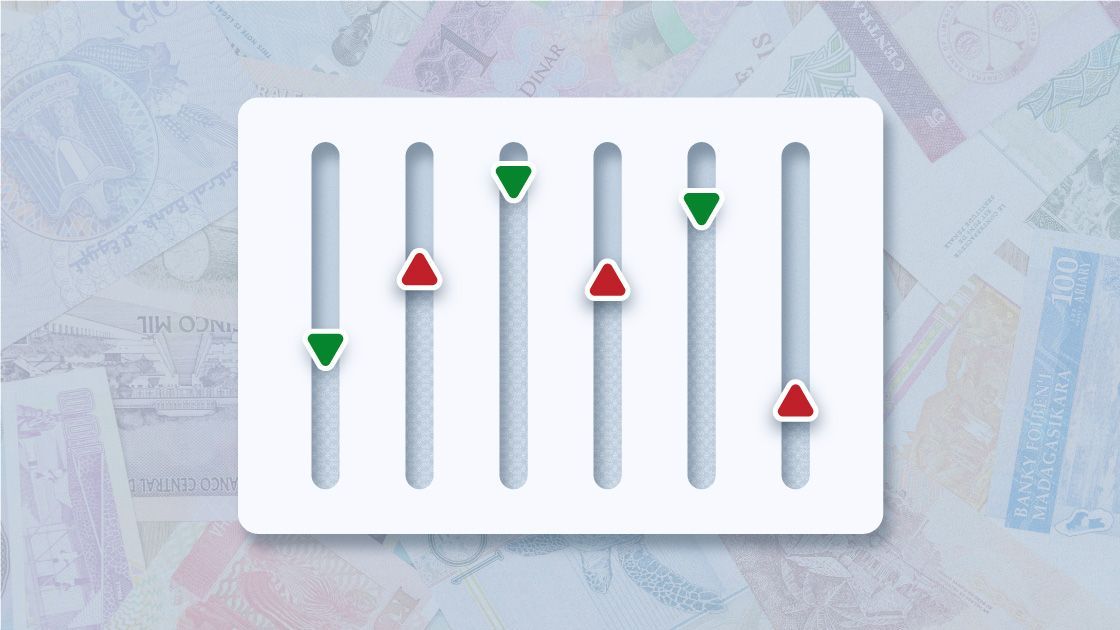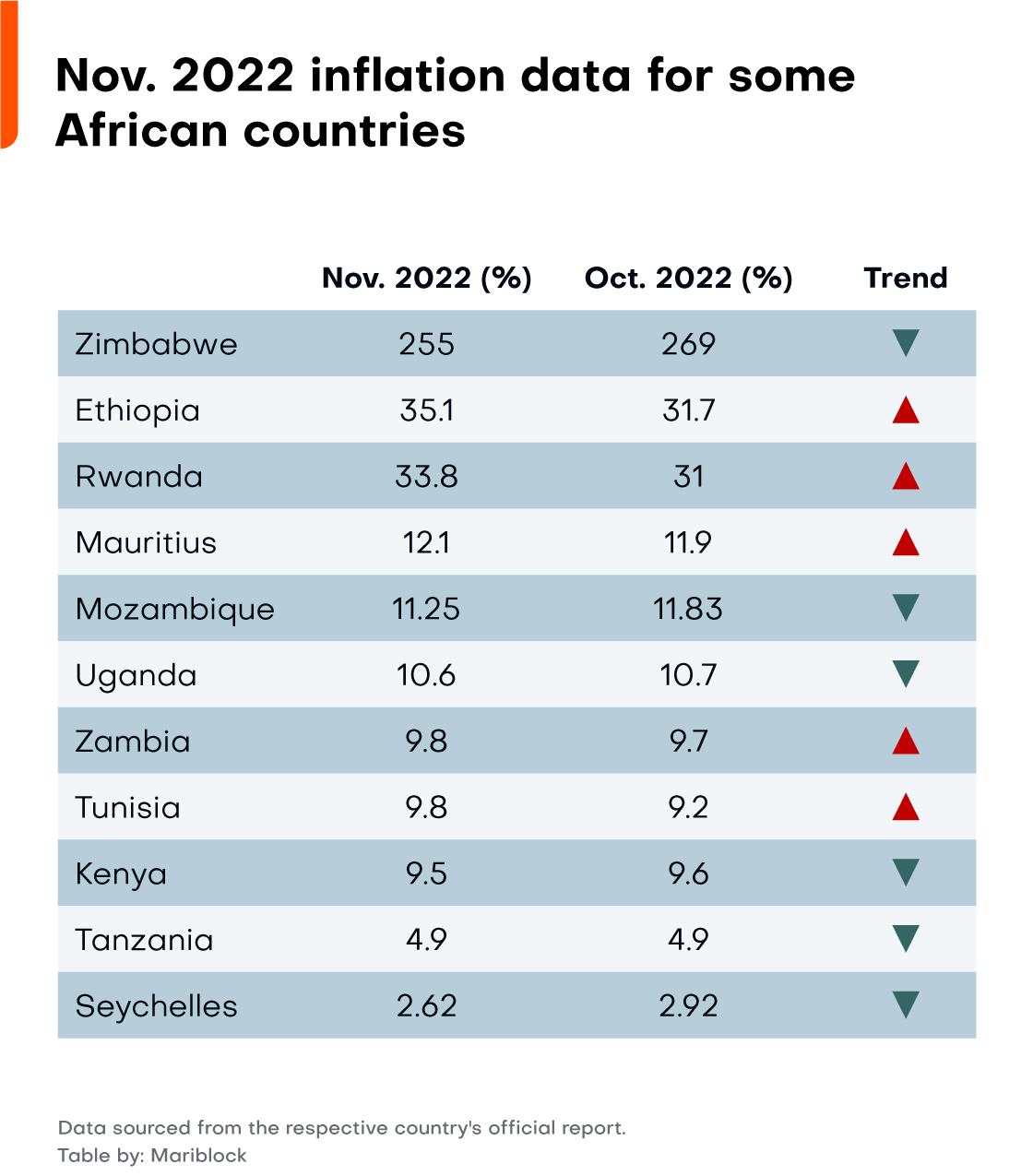Six of eleven African countries reported an inflation rate drop in November
African consumers are beginning to see steadier prices as 2022 nears its end, according to the latest inflation figures.

Inflation rates across Africa consistently rose in early 2022, with many countries reporting record consumer price increases. Things appear to have eased as year-end nears. The inflation trend across the region is now largely mixed.
Data from African countries that have reported Nov. 2022 inflation data indicates that price pressures may have relaxed further from October. Even those that reported rises in inflation saw slower acceleration rates.
Here’s a look at the November inflation figures released within the first two weeks of Dec. 2022.

Zimbabwe
- Zimbabwe has been the most inflation-raved African nation for a few years, with its consumer price index nearing 300% at some point.
- However, the pricing situation in the country is improving, having reported that its annual inflation rate fell to 255% in November from 269% in October.
- According to a report from the Zimbabwe National Statistics Agency (ZIMSTAT), the month-on-month rate also slowed to 1.8% from 3.2% in October.
- The Minister of Finance and Economic Development, Professor Mthuli Ncube, is targeting 1% to 3% monthly inflation rates in 2023 and expects the annual inflation to drop to double-digit figures (i.e., rates below 100%).
Ethiopia
- Ethiopia’s consumer price index — the most common measure of inflation — rose for the second consecutive month to 35.1% in November from 31.7% in the previous month.
- Regional conflicts and severe drought, both of which have adversely impacted the country’s agriculture and manufacturing sectors, are two of the most significant inflation drivers.
- According to a Bloomberg report, the internal strife ended in a ceasefire agreement in November. But it has cost Ethiopia its duty-free access to United States markets and severely damaged its infrastructure.
Zambia
- In Zambia, consumer prices accelerated slower, rising marginally from 9.7% in October to 9.8% in November. Food inflation eased to 12.1% compared to the 12.2% recorded in October. Non-food inflation, on the other hand, leaped to 6.7% from 6.5% in the previous month.
Kenya
- Kenya’s annual inflation eased slightly from 9.6% reported in October to 9.5% in November.
- The Kenyan National Bureau of Statistics (KNBS) attributes the improvement to a drop in fuel prices and essential food products. Still, food and fuel inflation in the East African country remains high at 15.4% and 13.8%, respectively.
Uganda
- Uganda, like Kenya, saw a slight drop in its annual inflation rate — 10.6% in November vs. 10.7% in October.
- The main drivers of the latest inflation figures, according to the Uganda Bureau of Statistics, are prices of food and non-alcoholic beverages, household equipment and education.
Zoom out
- The slight ease in consumer prices can be attributed to the monetary tightening measures deployed by African central banks, including interest rate hikes, as previously reported by Mariblock.



